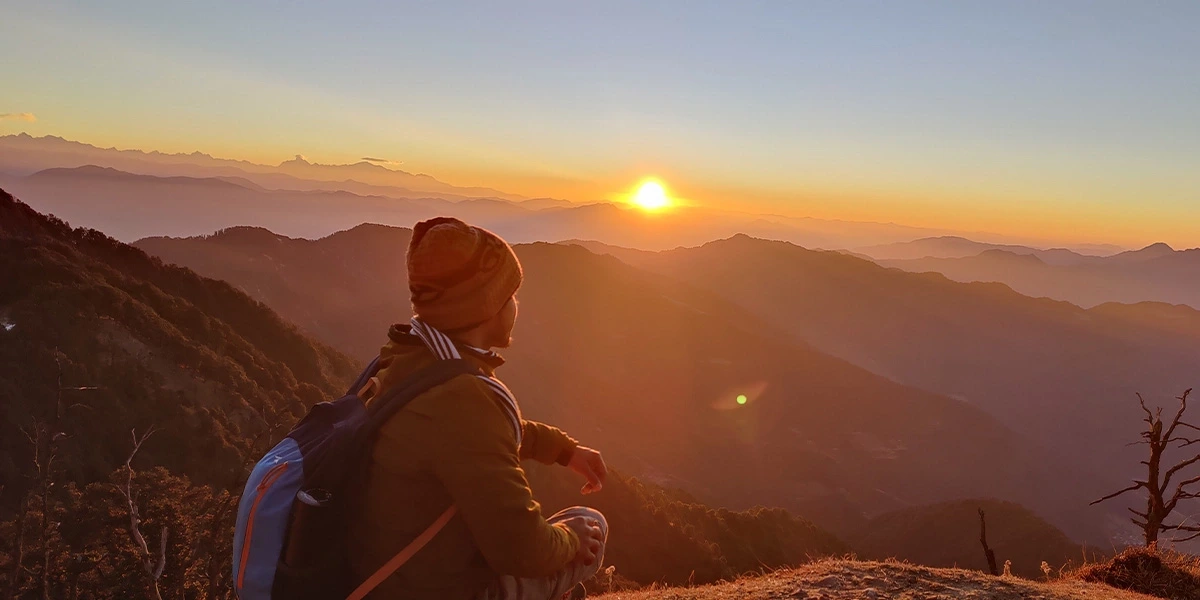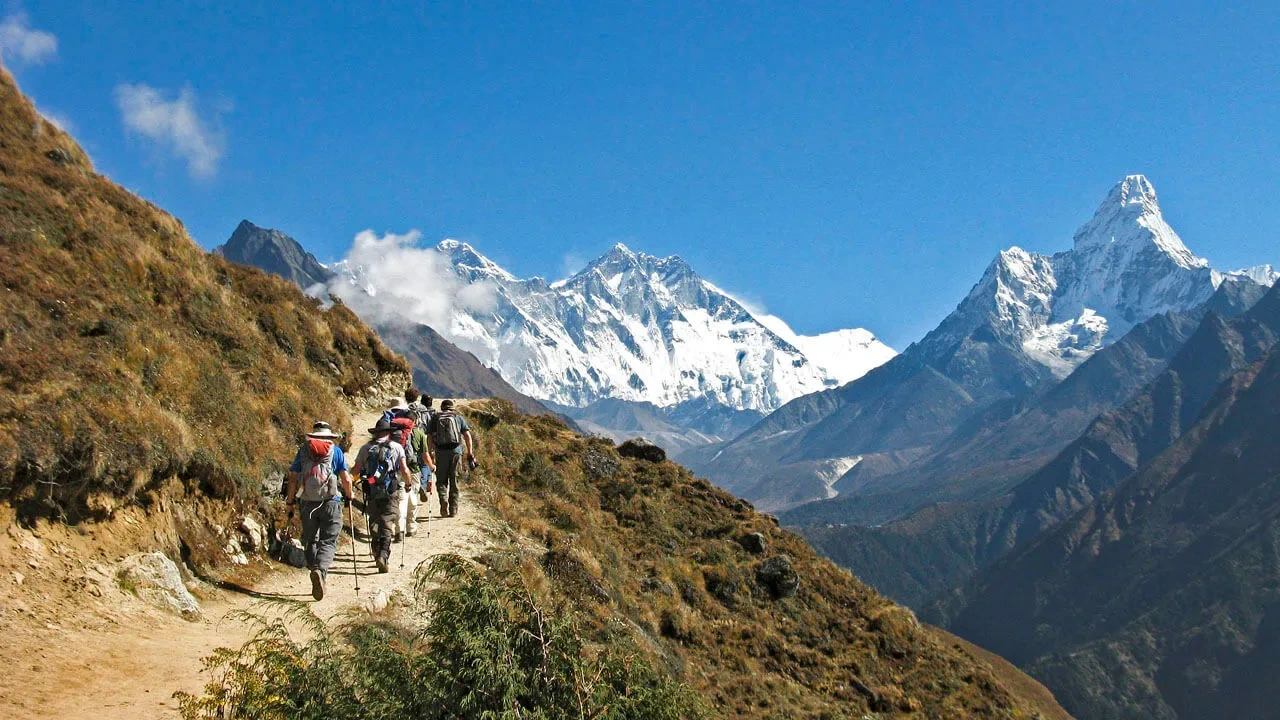The Hidden Stories of Courage and Tragedy: A Comprehensive History of Mount Everest More than just a majestic mountain, Mount Everest, the world's highest peak, is a symbol of human ambition, man's struggle to survive, and the fragile balance between man and nature. Over the years, Everest has been the stage for incredible feats of courage, devastating tragedies, and a growing conversation about environmental and ethical responsibility. Let's take a journey through its fascinating history.
1. The Formation and Significance of Mount Everests
When I first heard about Kedarkantha, I had no idea where it was. All I knew was that it involved a trek in the mountains. The word “mountains” alone sent a chill down my spine. But somehow, after reading a few blogs and seeing those stunning pictures of snow-capped peaks, I found myself texting a friend: “Hey, do you want to sign up for a trek to Kedarkantha?”
Geological Origins Mount Everest, standing at 8,848.86 meters (29,031.7 feet), was built millions of years ago due to tectonic plate movement. The Indian Plate collided with the Eurasian Plate, pushing up the Himalayas and creating Everest. Even today, the mountain grows a little every year because geological activity is still going on. Glacial erosion gives it its jagged, iconic shape, making it one of the most recognizable peaks in the world.
Cultural and Spiritual Significance For the Sherpa, Everest is more than a mountain. It is Sagarmatha in Nepal and Chomolungma in Tibet; it is sacred. It is said to be the "Mother Goddess of the World." For centuries, the surrounding communities have revered it as a spiritual beacon. Across the world, Everest has inspired explorers, poets, and dreamers, turning into a metaphor for life's greatest challenges.
Mount Everest as a Natural Monument Being the highest mountain in the world, Everest captures imaginations everywhere. Its status was confirmed during the 19th-century Great Trigonometric Survey of India. In 1979, it was recognized as part of the Sagarmatha National Park, a UNESCO World Heritage Site, due to its natural and cultural importance.
2. The Early Explorations and Ascents
Pioneer Expeditions The early 20th century marked the first attempts to conquer Everest. These pioneers battled harsh weather, rudimentary equipment, and uncharted territories. Figures such as George Mallory and Andrew Irvine became legends. Mallory was famously asked, "Because it's there," when challenged on why he wanted to climb Everest.
Success and Setbacks Early expeditions of Everest were characterized by failures and catastrophes. The unpredictable avalanches and the so-called "death zone" made it challenging for climbers. However, each decline was a new discovery, which improvised techniques and equipment for subsequent attempts.
British Impact on Everest Climbing British expeditions dominated the early exploration of Everest. Political motivation and national pride played huge roles in their relentless pursuit. The efforts of climbers like Mallory and Irvine, though not successful, laid the groundwork for subsequent ascents.
3. The Golden Age of Climbing Everest
The First Successful Ascent Sir Edmund Hillary of New Zealand and a Nepali Sherpa, Tenzing Norgay, managed to do what many others considered impossible: reach Everest's top in 1953. Their historic climb highlighted teamwork and the force of the human will. Thereafter, many climbers emerged.
Development in Climbing Techniques Changes in equipment, such as oxygen tanks and thermal clothing, enhanced mountaineering. Routes were planned more cautiously; it became safer for climbers climbing up Everest's steep slopes.
The Advent of Commercial Climbing Expeditions Guided expeditions became popular in the 1990s, making Everest accessible to a broad range of climbers while raising concerns about overcrowding and security issues.
4. Stories of Bravery and Tragedy
Some Notable Incidents and Accidents The 1996 Everest disaster, as told in books and films, is a grim reminder of the dangers of the mountain. Unpredictable storms took the lives of eight climbers and changed climbing practices.
Human Spirit in Adversity Everest has not been without its moments of outstanding bravery amidst tragedy. Climbers who risk their own lives to save others are evidence of the deep humanity that persists even in life-threatening circumstances.
Psychological Effect of Climbing Climbers experience extreme psychological stress-fear, isolation, and sorrow over lost friends. Testimonies by climbers portray the emotional strength required not only to complete the climb but also its aftermath.
5. Contemporary Issues and Future Concerns
Climbing Impact on the Environment Everest's fame has been a heavy price. Garbage and pollution scar its slopes, and global warming threatens its glaciers. Conservation attempts seek to protect its sensitive environment.
Evolving Ethics in Mountain Climbing Commercial expeditions have sparked debates about the ethics of summiting Everest. Is the dream worth risking lives and damaging the environment? Climbers and organizers must balance ambition with responsibility.
The Future of Everest Climbing The future of Everest lies in sustainable practices. Improved safety measures, scientific studies, and eco-friendly expeditions offer hope for preserving its legacy for generations to come.
Conclusion
Mount Everest stands as a monument to human courage and nature's grandeur. Its history is full of tales of triumph, heartbreak, and enduring lessons. As we continue to explore and admire this iconic peak, we must also protect and respect it, ensuring its beauty and significance endure.
FAQs
1. What is the best time to climb Mount Everest?The spring (April-May) and autumn (September-October) seasons are considered the best time for climbing.
2. How much is the average cost of scaling Everest today? Scaling Everest runs from ₹25,00,000 to ₹80,00,000 as per the style of an expedition.
3. How to prepare for an expedition from an aspiring climber? It involves physical fitness, altitude acclimatization, and technical climbing skills.
4. What are the safety features used during climbs? Oxygen tanks, weather forecasts, and guided support are used in safety.
5. How have climatic changes affected Mount Everest over the last few years? Melting glaciers and changing weather patterns are affecting climbing conditions and the ecosystem.









